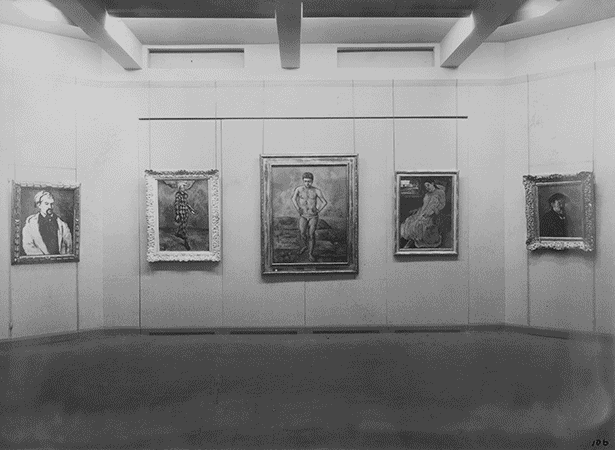Installation photographs, archival documents, and catalogues of exhibitions now available to students, researchers, artists, curators, and the public
The Museum of Modern Art announces the release of a digital archive accessible to historians, students, artists, and anyone concerned with modern and contemporary art: a comprehensive account of the Museum’s exhibitions from its founding, in 1929, to today. This new digital archive, which will continue to grow as materials become available, is now accessible on MoMA’s website, at moma.org/history.
Providing an unparalleled history of the presentation of modern and contemporary art on a widely available platform, the project features over 3,500 exhibitions, illustrated by primary documents such as installation photographs, press releases, checklists, and catalogues, as well as lists of included artists. By making these unique resources available at no charge, the exhibition history digital archive directly aligns with the Museum’s mission of encouraging an ever-deeper understanding of modern and contemporary art and fostering scholarship.
“The Museum of Modern Art has played a crucial role in the development of an audience for modern and contemporary art for nearly 90 years,” said MoMA Director Glenn D. Lowry. “In making these materials freely available, we hope not only to foster and enable scholarship, but also to encourage a wider interest in this important chapter of art history that the Museum represents.”
The Exhibition History project was initiated and overseen by Michelle Elligott, Chief of Archives, and Fiona Romeo, Director of Digital Content and Strategy, The Museum of Modern Art. Over the course of the last two-and-a-half years, three MoMA archivists integrated over 22,000 folders of exhibition records dating from 1929 to 1989 from its registrar and curatorial departments, performed preservation measures, vetted the contents, and created detailed descriptions of the records for each exhibition.
The digital archive can be freely searched, or browsed in a more structured way by time period or exhibition type. Most entries include a list of all known artists featured in the exhibition. Artist pages likewise list all of the exhibitions that have included that artist, along with any of their works in MoMA’s collection online. The index of artists participating in MoMA exhibitions now includes more than 20,000 unique names.
Depending on the archival resources available, an exhibition page may include installation photographs, an annotated exhibition checklist, multiple press releases, the full exhibition catalogue, and the list of participating artists. Special subsites created for MoMA exhibitions—the first of which was for Mutant Materials in 1995—are also included, as are slideshows, videos, and commissioned essays.
As part of this project, exhibition catalogues were newly digitized. Beginning with the catalogue for the Museum’s very first exhibition, Cézanne, Gauguin, Seurat, Van Gogh, in 1929, the 800 catalogues now online offer decades of art historical expertise on topics ranging from architecture, design, painting, sculpture, drawing, and photography to media and performance. Out-of-print book titles are generally accessible; current in-print titles are featured with excerpts and links to purchase the books.
The underlying data has also been shared on GitHub, completing a trilogy of Museum of Modern Art datasets covering artworks, artists, and exhibitions dating 1929 to 1989. This data is in the public domain and can be sorted and analyzed.
Future phases of the project will include the processing of additional records from 1990 to 2000 over the next three years, as well as the inclusion of thousands of film series presented by MoMA’s Department of Film over its 80-year history, a history of performance at MoMA and MoMA PS1, and the exhibition history of MoMA PS1.
Funding for the processing of The Museum of Modern Art exhibition records was generously provided by the Leon Levy Foundation.


